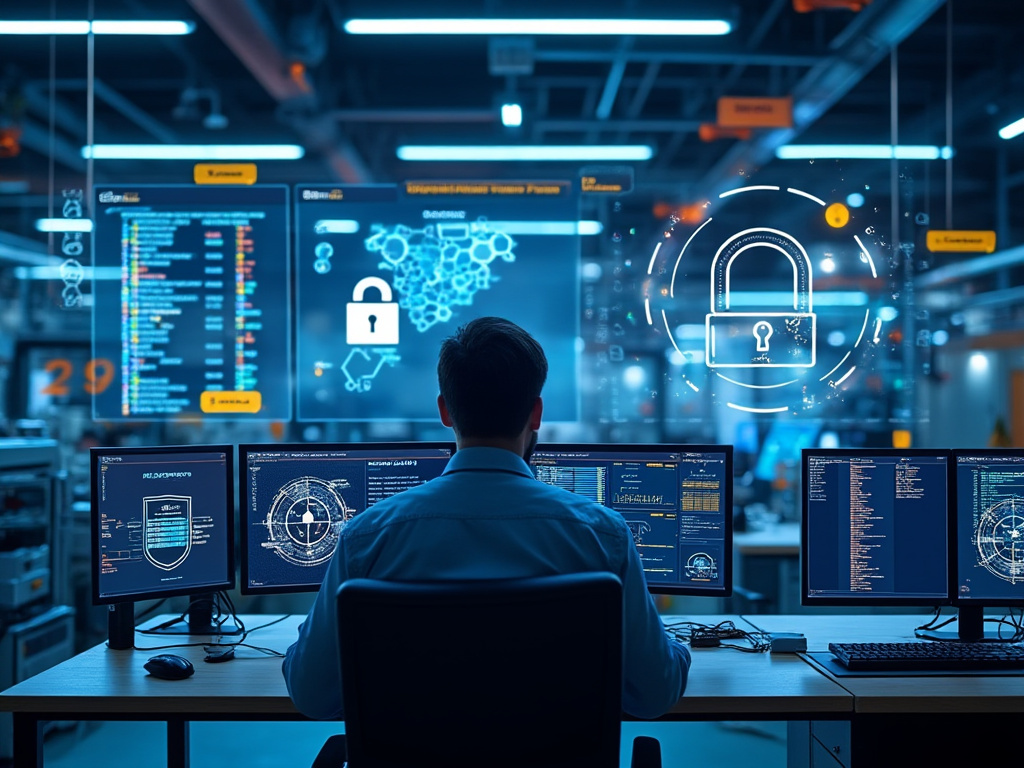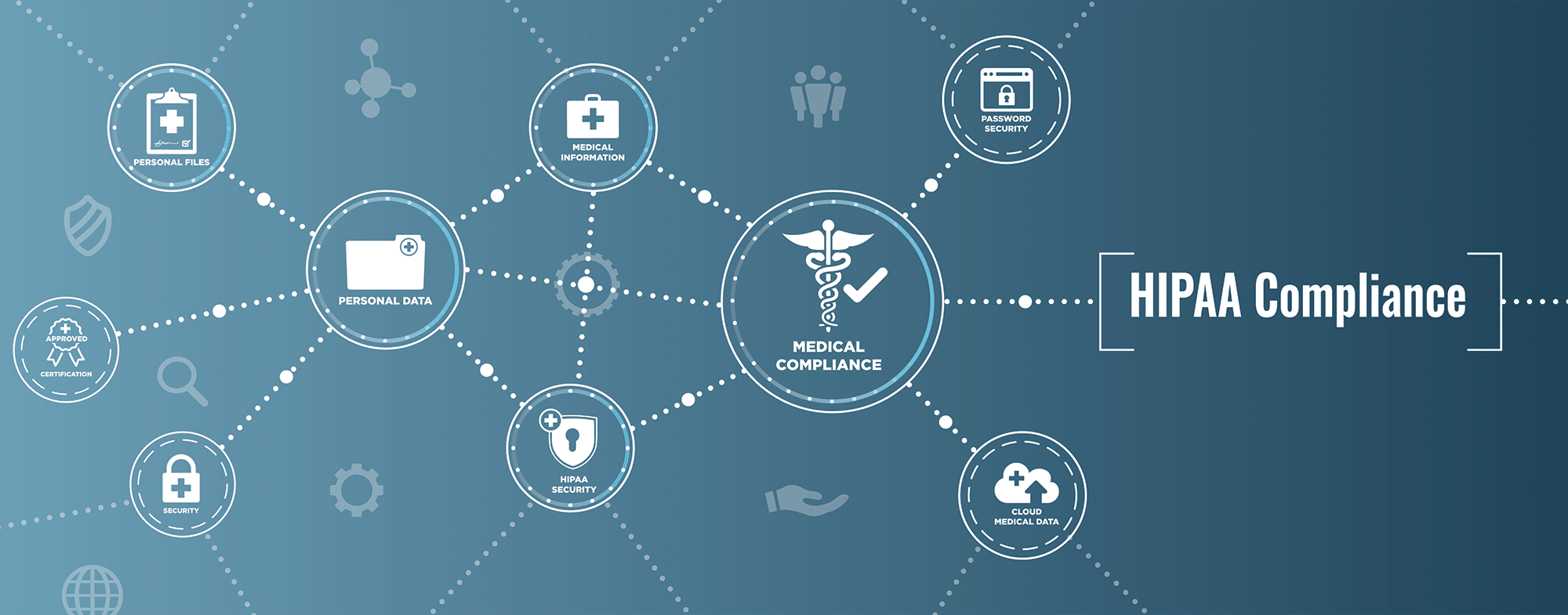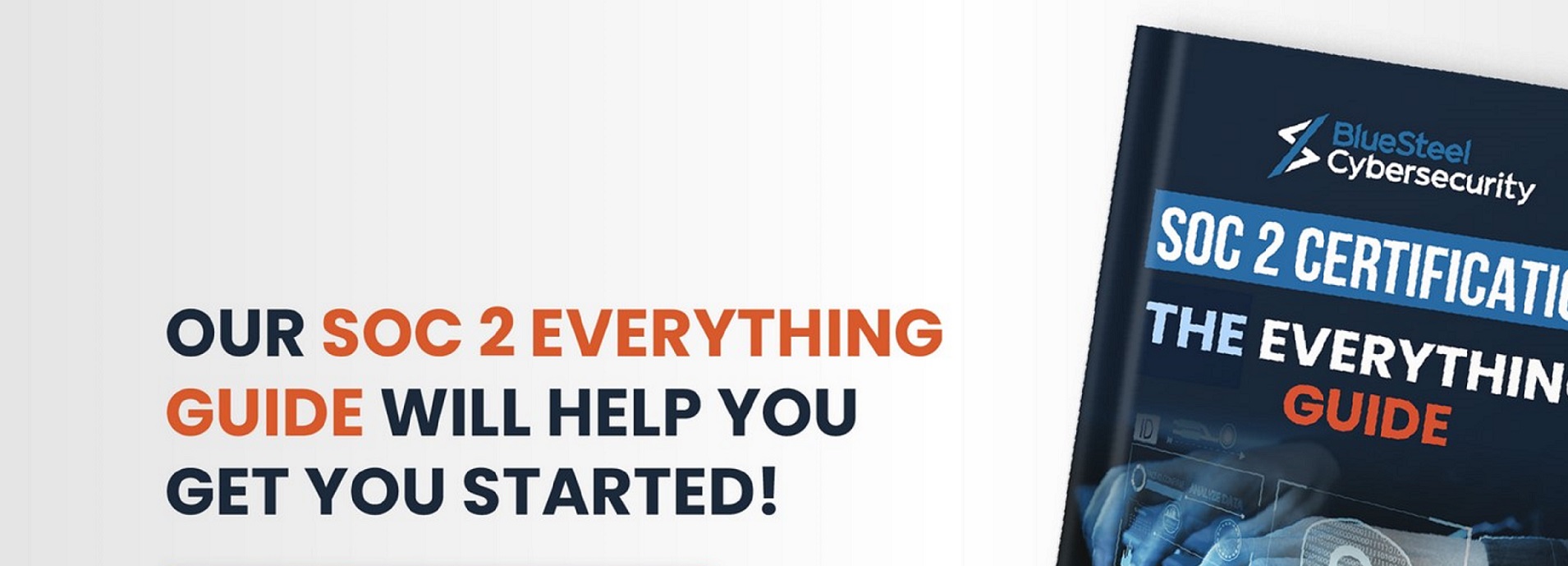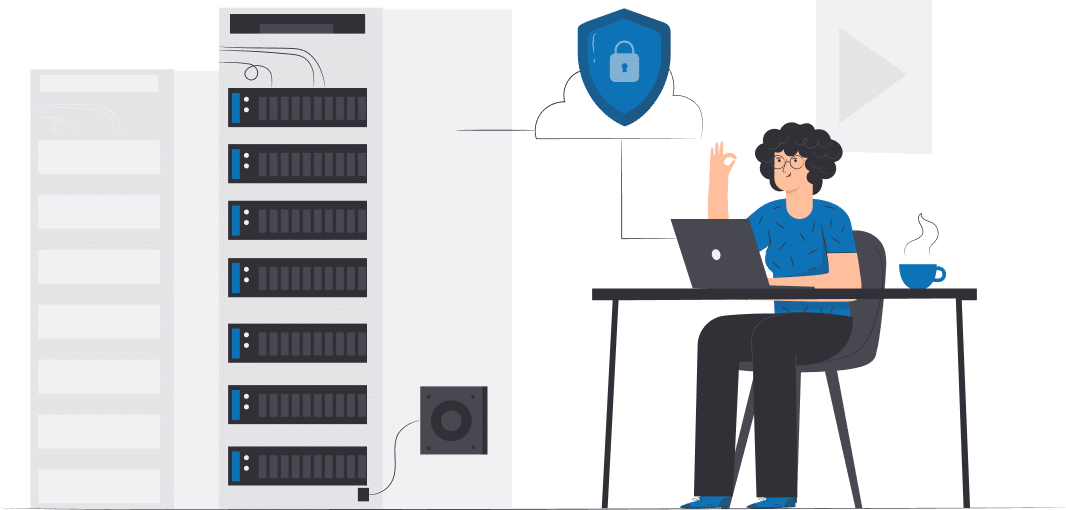In an age dominated by digital interactions and online learning platforms, the security of our educational infrastructure has become paramount. As we navigate the labyrinth of technological advancements, we are confronted with a disconcerting reality: our schools, our very havens of knowledge and development, have emerged as prime targets for cyberattacks.
The 2022-2023 academic year illuminated this issue with piercing clarity. Across the nation, K-12 schools found themselves ensnared in the vice grip of sophisticated cyberattacks. These weren’t arbitrary acts of mischief; they were calculated intrusions aiming to extract sensitive data, disrupt the educational process, and extract ransoms. Such actions have grave ramifications, not just in the immediate aftermath, but echoing into the future of affected students and institutions.
It isn’t just the breach of institutional data that’s alarming. It’s the nature of the compromised data: personal details, academic performances, behavioral assessments, and more, that paints a worrying scenario. When intimate details about students, especially those within the vulnerable K-12 age bracket, are exposed, it subjects them to unforeseen dangers and psychological stress.
Furthermore, these cyberattacks highlight a broader systemic issue. As the world leans more towards online platforms for education, especially given the recent push towards remote learning, the security framework of these platforms must be infallible. The episodes from the 2022-2023 school year serve as a stark reminder of the vulnerabilities within our system.
The question we face isn’t merely about how to react but how to proactively shield our educational sanctums from such breaches. As guardians of these institutions, it is an imperative not just to understand the magnitude of the threat but to dissect its origins, analyze its implications, and fortify our defenses against future incursions.
In this article, we will journey through some specific incidents, the national and corporate response to these threats, and the ways forward in ensuring our schools remain impervious to such attacks in the digital age.
Unpacking the Minneapolis Public Schools Incident
The Minneapolis Public Schools episode stands as one of the most disconcerting examples of how deep cyberattacks can penetrate the sanctity of our educational institutions. Early in the 2022-2023 academic year, the district fell prey to a sophisticated ransomware attack, an intrusion that saw malicious actors locking out essential data and demanding a ransom for its release.
Delving into the specifics of this breach reveals the chilling extent of the compromise. The exposed data wasn’t limited to mundane administrative details or academic records and instead, encompassed raw, deeply intimate, and graphic information about students. Reports suggested that data dumps included details of student sexual assault cases, psychiatric hospitalizations, bullying incidents, cases of abusive parents, and even suicide attempts. This was not just a breach of data, but a violation of trust and privacy on an unprecedented scale.
The immediate fallout was palpable. Parents were understandably outraged and terrified, students felt violated, and the school administration grappled with the weight of the breach and its implications. Beyond the initial shock, the incident sparked a fervent debate about the security measures in place and the preparedness (or lack thereof) of institutions to counter such sophisticated threats.
For other schools and districts nationwide, the Minneapolis incident wasn’t just a news headline; it was a cautionary tale. If a district as prominent as Minneapolis could be targeted and compromised, no institution was truly safe. This realization galvanized many districts into re-evaluating their cybersecurity protocols, understanding that the threat wasn’t hypothetical—it was real, present, and potent.
The broader implication underscored a systemic vulnerability: our K-12 institutions, regardless of size or prestige, need to be fortified against the ever-evolving threats in the cybersphere. The Minneapolis incident serves as a stark reminder of the stakes at play.
The Financial and Educational Impact of Cyberattacks
The aftermath of a cyberattack on an educational institution goes beyond the immediate breach of data. It spirals into a complex web of financial and academic repercussions that can debilitate schools and districts for extended periods.
From a financial perspective, the direct costs can be staggering. Schools often face the immediate burden of hardware replacements, software upgrades, and the deployment of enhanced cybersecurity measures. On average, schools can expect total losses of around $2.73M per breach. This immediate financial strain is exacerbated by potential legal actions from affected parties and the long-term reputational damage, leading to a possible decline in enrollments or reduced public funding.
Academically, the disruption caused by a cyberattack is multifaceted. The immediate halt of digital services can result in the loss of critical educational time. According to a report by the GAO, K-12 schools affected by cyberattacks lost anywhere from three days to three weeks of learning time. Recuperating this lost time is not a mere game of catch-up. It demands additional resources, extended hours, and, often, the reorganization of academic calendars. For students, especially those approaching critical examinations, such disruptions can have lasting impacts on their educational trajectories.
The broader economic consequences extend beyond individual institutions as regular cyberattacks can strain the education sector, leading to increased insurance premiums, heightened cybersecurity expenditure across the board, and reduced faith from stakeholders, including parents, guardians, and sponsors.
Considering this, keep in mind that while the immediate effects of a cyberattack are stark and visible, the ripple effects permeate multiple layers of the education ecosystem, underscoring the dire need for preemptive and robust cyber defenses in our schools.
The National Response to Cybersecurity Threats
The repercussions of cyberattacks on educational establishments are not merely limited to the initial breach; they cascade into a myriad of financial, educational, and broader economic challenges.
First and foremost, the immediate financial aftermath is significant. Affected schools and districts often grapple with substantial out-of-pocket expenses. This includes the costs for emergency IT interventions, potential ransom payments, hardware and software replacements, and post-attack investigations. As mentioned, in most instances, losses can range from $50,000 to an overwhelming $2.73 million per incident. Yet, the monetary strain doesn’t end there. With parents and guardians becoming increasingly litigious, schools may find themselves facing costly legal battles, settlements, or compensations, further stretching their already tight budgets.
On the educational front, cyberattacks bring with them a pronounced disruption. As schools have increasingly adopted digital platforms for lessons, assignments, and assessments, an attack can paralyze these essential functions. Based on GAO insights, such disruptions have led to K-12 schools losing valuable learning time, ranging from a few days to an alarming three weeks. Extending beyond a mere temporary setback; it reshapes the academic rhythm. Schools need to restructure syllabuses, reschedule exams, and in some cases, extend the academic year, placing additional strain on both educators and students.
Beyond the immediate institutional consequences, the regularity of cyberattacks on schools has broader economic implications. For one, there’s the collective economic burden of increased cybersecurity investments across the educational sector. Additionally, with rising incidents, schools might see hikes in insurance premiums. Moreover, the erosion of trust can result in decreased enrollments, affecting the long-term financial viability of institutions.
So, to sum it up, the menace of cyberattacks is not just an IT challenge; it’s an overarching crisis that threatens the very fabric of our educational infrastructure, warranting urgent, coordinated action.
The Role and Promise of EdTech Companies
In the face of rising cyber threats to educational institutions, EdTech companies are emerging as crucial allies, offering a blend of technological solutions, resources, and funding to bolster the defenses of schools and districts.
Prominent players like Amazon Web Services (AWS), Cloudflare, PowerSchool, Google, and D2L have taken proactive steps in response to the growing cyber menace. For instance, AWS offers a vast array of cloud-based services tailored to safeguard educational data, ensuring that schools can securely manage and store critical information. Cloudflare steps into the fray with its advanced web security solutions, geared towards mitigating DDoS attacks and safeguarding school websites from breaches.
PowerSchool, a leading player in the school management software arena, focuses on providing secure digital solutions to K-12 institutions. Google, with its vast suite of educational tools, has continually enhanced its security measures, ensuring that platforms like Google Classroom remain fortified against threats. D2L, known for its learning management systems, promises not only secure platforms but also ongoing training for educators to recognize and prevent potential breaches.
While these companies’ offerings and initiatives paint an optimistic picture, it’s still crucial to analyze the efficacy of these solutions in real-world scenarios. Are the security tools and funding adequate to keep pace with the evolving nature of cyber threats? Is there a tangible difference between the promised security enhancements and the actual on-ground defense these tools offer?
Initial feedback from educational institutions suggests that even though these solutions are a step in the right direction, gaps remain. There’s a recurring need for continuous upgrades, regular training, and perhaps most importantly, a synergy between what EdTech companies promise and what schools truly need.
In essence, EdTech companies are pivotal in the fight against cyberattacks, but a holistic, collaborative approach involving educators, administrators, and tech experts is imperative for genuine, lasting protection.
Root Causes Behind Cyberattacks
Understanding the growing threats against K-12 educational institutions necessitates a deep dive into the root causes behind successful cyberattacks. By identifying these foundational issues, we can tailor our defense mechanisms more effectively and potentially thwart such incursions.
A predominant factor leading to breaches is outdated infrastructure. Many schools and districts operate on legacy systems, with software and hardware that haven’t been updated in years. These older systems often lack the built-in security measures required to fend off modern cyber threats. For attackers, they represent low-hanging fruit, easily exploited due to their inherent vulnerabilities.
Coupled with outdated infrastructure is the prevailing lack of cybersecurity awareness. Many educational institutions, in their drive to digitize operations and academic processes, may inadvertently overlook or underestimate the importance of cybersecurity training. Educators, administrators, and students, unfamiliar with the telltale signs of phishing attempts, malware, or other malicious activities, can unintentionally become the weak links, granting cybercriminals the access they seek.
Furthermore, resource constraints play a pivotal role. Smaller institutions, in particular, may lack the budget or expertise to invest in state-of-the-art cybersecurity solutions or hire dedicated IT security personnel. This, in turn, makes them more susceptible to attacks.
But beyond these evident issues, there’s a more insidious factor at play: the ever-evolving nature of cyber threats. As security measures advance, so do the techniques employed by cybercriminals, leading to an ongoing cat-and-mouse game.
Recognizing and addressing these root causes is of paramount importance. Only by comprehending the core issues can schools devise comprehensive strategies that not only react to breaches but proactively prevent them. It underscores the necessity for continuous infrastructure upgrades, regular cybersecurity training, adequate resourcing, and a commitment to staying abreast of the shifting landscape of cyber threats.
Proactive Solutions and Measures
To safeguard our educational institutions against the menacing shadow of cyberattacks, a proactive stance, underpinned by robust solutions and measures, is imperative. By anticipating threats rather than merely reacting to them, schools can fortify their defenses more effectively.
At the forefront of this proactive defense are cutting-edge cybersecurity solutions. Next-generation firewalls, intrusion detection systems, and real-time monitoring tools play a pivotal role in detecting and neutralizing threats before they cause significant damage. Furthermore, secure cloud storage solutions, end-to-end encrypted communication platforms, and multi-factor authentication methods add layers of protection against potential breaches.
However, technology alone is not the panacea. Awareness campaigns are equally vital. By educating staff, students, and even parents about the telltale signs of phishing emails, the dangers of downloading unverified attachments, or the risks associated with weak passwords, institutions can mitigate human-induced vulnerabilities. This is where continuous training comes into play. Regular workshops and training sessions, updated to reflect the evolving nature of cyber threats, can empower the educational community to be the first line of defense against cyberattacks.
Beyond individual measures, a holistic, unified approach is essential. This means fostering collaboration between educators, administrators, IT professionals, students, and parents. A cohesive strategy, where everyone is aware of their roles and responsibilities in the cybersecurity ecosystem, can create a fortified environment.
Remember, the battle against cyberattacks on educational institutions demands a multi-pronged approach. While leveraging the latest in tech solutions is crucial, embedding a culture of cybersecurity awareness and ensuring continuous updates and training are just as vital. Through collective vigilance and a commitment to proactive defense, our schools can stand resilient against the cyber threats of the future.
The Evolving Nature of Cyberthreats
The digital landscape is in constant flux, and with its evolution, cyberthreats have grown in complexity and sophistication. Understanding this transformation is crucial for institutions, especially K-12 schools, as they strive to remain fortified against an ever-changing enemy.
In the early days of the internet, cyberattacks were often the works of lone hackers, driven more by curiosity than malice. Fast forward to today, and the scenario is vastly different. Organized cybercriminal syndicates, leveraging state-of-the-art tools and techniques, launch coordinated attacks with specific, often monetary, objectives. Ransomware attacks, for instance, which lock out users from their data and demand payment for its release, have surged in popularity due to their profitability.
Looking to the horizon, the threat landscape presents novel challenges. With the rise of the Internet of Things (IoT) and increased device connectivity, schools will have to safeguard not just traditional computing devices but a plethora of connected gadgets. Moreover, as Artificial Intelligence and Machine Learning integrate deeper into educational systems, new vulnerabilities may emerge that cybercriminals could exploit.
It’s imperative, given this dynamic environment, for K-12 schools to adopt a proactive and predictive stance. Schools will need to invest in threat intelligence, understanding emerging threats, and devising countermeasures even before these threats manifest. Scenario planning, where institutions play out potential attack vectors and responses, can also be an invaluable tool.
In conclusion, the cyber realm’s evolving nature mandates that schools remain not just vigilant but perpetually a step ahead. By understanding past patterns, recognizing emerging threats, and predicting future challenges, K-12 institutions can better equip themselves to provide a secure learning environment in this digital age.
The Path Forward
As we reflect upon the cyber landscape encompassing our K-12 educational institutions, a few salient points emerge. The threats are real, persistent, and evolving. From the harrowing breach at Minneapolis Public Schools to the myriad of other incidents, it’s evident that no institution, regardless of size or stature, is immune.
Yet, in the face of these challenges, there’s been a heartening rally from various quarters. National agencies, EdTech giants, and schools themselves have displayed a commendable resolve, pushing back with state-of-the-art technological defenses, training, and collaborative cyber security initiatives. This multifaceted response, as showcased through the instances of successful cyberattack aversions, attests to our capability to defend our educational sanctums when we act in unison.
However, resting on our laurels is not an option. The nature of cyber threats ensures that today’s cutting-edge defense might become tomorrow’s vulnerability. This dynamic demands continuous innovation, investment, and an unwavering commitment to cybersecurity. It’s a race, not a destination, and our approach must be characterized by agility, foresight, and persistence.
As guardians of our educational future, every stakeholder, from policymakers to educators, from tech experts to parents, must come together. We must forge a united front, pooling our resources, knowledge, and expertise. Only through collective vigilance, continuous effort, and an undying spirit of innovation can we hope to keep our schools, our sanctuaries of learning, safe in this digital age. The future of our next generation depends on it.







